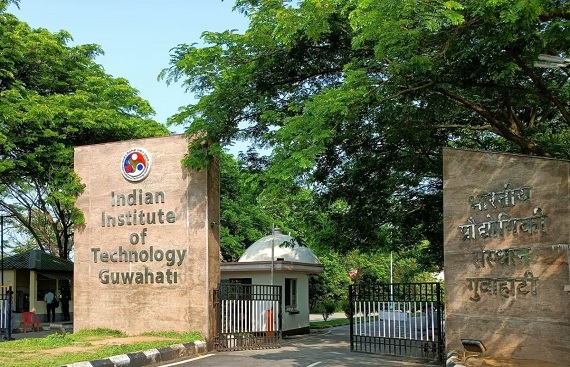IIT Guwahati leads breakthrough in Wide Bandgap Semiconductors
By
siliconindia | Tuesday, 06 February 2024, 02:58 Hrs

A team of researchers, led by Ankush Bag, an Assistant Professor at the Department of Electronics and Electrical Engineering and Centre for Nanotechnology at the Indian Institute of Technology Guwahati, in collaboration with IIT Mandi and the Institute of Sensor and Actuator Systems at Technical University Wien, has devised a cost-effective technique for cultivating a specialized semiconductor. This semiconductor holds the potential to significantly improve the efficacy of power electronics in applications requiring high power, such as electric vehicles, high-voltage transmission, traction, and industrial automation. The groundbreaking method enables high-power devices to operate efficiently even under extreme temperatures, reaching up to 200 ºC, making it a widely applicable innovation.
The research group has created a novel and affordable technology for the synthesis of gallium oxide, an ultrawide bandgap semiconductor. This is accomplished using a tailor-made low-pressure chemical vapor deposition (LPCVD) system. Emphasizing the need for this research Bag, said, ”Power Semiconductor devices are the heart of every power electronic system and function primarily as efficient switches, toggling ON and OFF to condition incoming power from the grid to be used by end-user. For emerging high-power applications, there is a demand for compound semiconductor materials with an ultra-wide bandgap".
Power electronic systems play a vital role to manage and control the flow of electricity. They are crucial for converting electrical energy from both renewable including solar and wind, and non-renewable sources including thermal power plants, into a form compatible with end-user applications in terms of voltage, current and frequency. However, there will always be some losses incurred when the electrical energy passes through a typical power electronic system. Researchers globally have been working on improving the efficiency of power electronic systems using materials like Gallium Nitride(GaN) and Silicon Carbide(SiC) but these have limitations, especially in terms of cost, for high-power applications.
Bag further added, “The main challenge was to make thin and smooth films out of the material. After multiple trials and rigorous study, we optimized the gallium oxide semiconductor and incorporated it with tin to improve and modulate its conductivity. We have successfully developed superior-quality ultra-wide bandgap compound semiconductors and fabricated two terminal devices. The applications of this technology extend to electric vehicles, high voltage transmission, traction systems, and industrial automation".
Speaking about the uniqueness of this research Bag said, “A key challenge of this research was creating a Gallium oxide thin film on a sapphire substrate, deviating from the common use of Gallium oxide substrates. This shift enhances cost-effectiveness and thermal performance, addressing issues related to the expense and poor thermal conductivity of Gallium oxide substrates".
The study's findings have been documented in numerous research papers featured in the Journal of IEEE Transactions on Electron Devices and Thin Solid Films. Among the co-authors are Satinder Sharma and Arnab Mondal from the School of Computing and Electrical Engineering at IIT Mandi, Manoj Yadav from the Institute of Sensor and Actuator Systems at TU Wien in Vienna, Austria, and Ankush Bag from the Department of Electronics and Electrical Engineering at IIT Guwahati. This groundbreaking research has been financially supported by the Science and Engineering Research Board (SERB) under the Department of Science and Technology, representing a significant advancement in the realm of high-power electronics.
